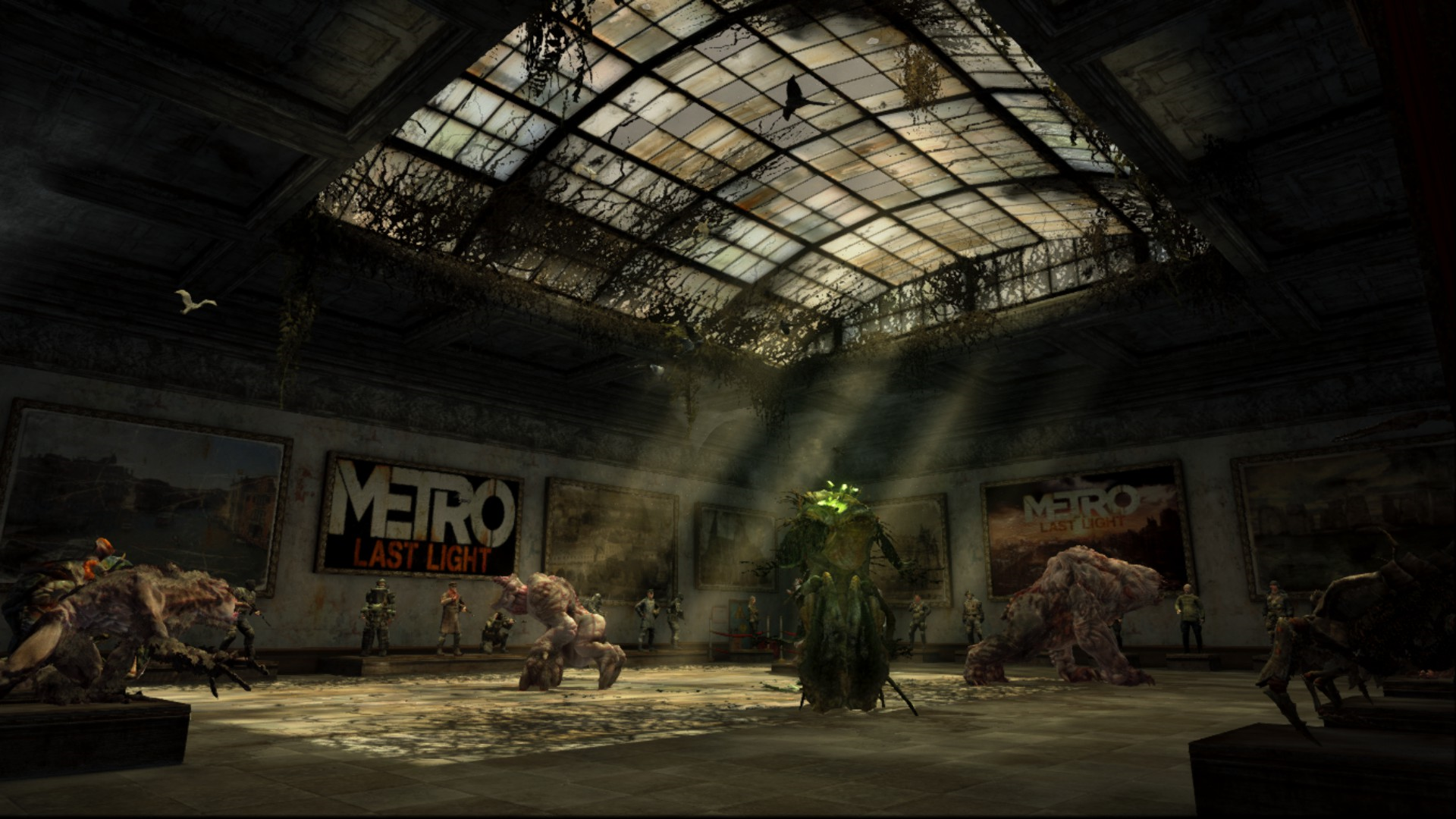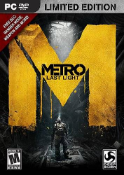Metro: Last Light - Developer Pack Review
|
|
See PixlBit's Review Policies

On 10/21/2013 at 12:51 PM by Daniel Iverson Great DLC, or a wasted opportunity? Yes, absolutely. |

For $3.99, the Developer Pack is probably worth buying to play the Spider Nest mission even with how underwhelming the other components are.
The third DLC release to hit Metro: Last Light’s Season Pass, the Developer Pack adds a standalone mission plus a few additional odds and ends.
Spider Nest
The Spider Nest mission is the centerpiece of the Developer Pack. A brief scene introduces three anonymous men about to embark on a quixotic expedition to a rumored depot. Fast forward, and the avatar awakens to an arachnophobe’s nightmare. With the depot overrun with spiders and the others missing, escape is the only chance of survival.

Spider Nest continues one of the more interesting mechanics from the original game. Adapted to the darkness of the Metro, the mutated spiders you’re fighting are weak to light. Shining a flashlight on them causes them to withdraw and eventually flip, exposing their soft undersides to gunfire.
The 30-minute mission is an effectively creepy experience full of claustrophobic passages covered with eggs and webs and crawling with spiders. Initially a lighter is the only defense available, and I was quite apprehensive moving from one lantern to another. Toward the end of the mission, you get a flamethrower—and then it’s payback time.
All said, I enjoyed the mission’s varied gameplay, and the length was about right.
The other components of the Developer Pack are collected into a single menu option. Selecting it brings you to a facility with halls leading to the shooting range, arena, and museum. Unlike the other DLC released so far, it doesn’t try to establish any context; the mission briefing simply describes the contents of the pack.
Shooting Range
The shooting range is, well, a shooting range. You may place targets manually or complete one of 10 challenges. Target placement and movement change, but the objective of every challenge is the same: to shoot a certain number of targets within a certain amount of time using any weapon from the game.

The challenges would be a lot more fun if the objectives were more diverse. Every challenge boils down to speed, so the more interesting but slower weapons such as the flamethrower are all but useless. I completed all 10 challenges to verify I wouldn’t miss something worth mentioning, but I stopped being interested after the third or fourth.
Arena
The arena might be even worse. It’s a single map onto which you may place human and mutant units to fight one another. You may watch the battle from several camera angles and change the day/night cycle, or you may enter the fight yourself by jumping from the starting platform into the arena. A counter tracks the number of kills each side achieves.

Were the arena closer to its ostensible purpose as a “debug” mode intended to give players a taste of being a developer, it could be fun. I can dream up several ways it could be more engaging and worthwhile. How about the ability to modify the conditions of the battle, or the parameters of the units? With so few variables to control, it’s a wasted opportunity. To call it half-assed may be too high a compliment, so I’ll go with quarter-assed.
Museum
Once you’ve exhausted the entertainment value of the shooting range and the arena, it’s off to the museum. Here you may view character and enemy models up close, including mutants who otherwise are too busy trying to eat your face to strike a pose. You may rotate the camera and change the animation but otherwise can’t manipulate the view.

The art of Metro: Last Light is quite impressive, and the museum is a creative and slightly more interactive alternative to the usual in-game art gallery. More viewing options would be appreciated, though.
The Spider Nest mission is great. Unfortunately, it’s exclusively packaged with the less-than-great shooting range, arena, and museum. While their shortcomings are their own, their inclusion reduces the quality, and my recommendation, of the Developer Pack as a whole.










Comments